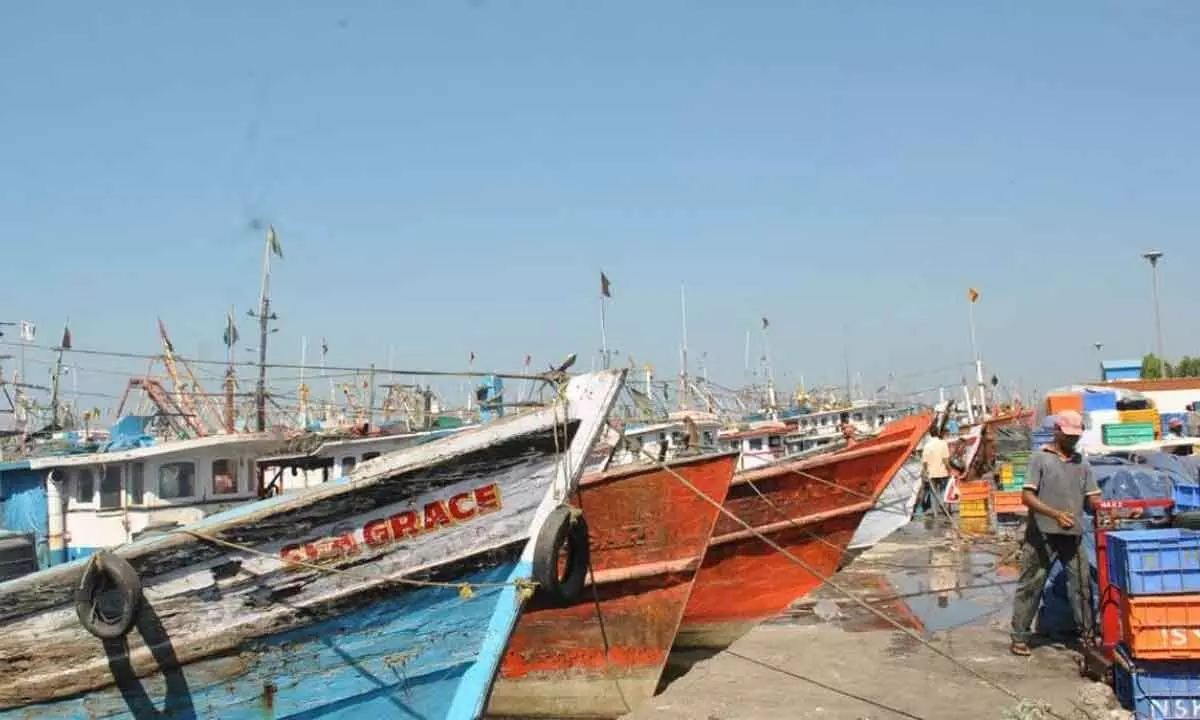Power crisis takes a toll on fishermen in K’nataka
Since the onset of the power crisis in August, ice plants in the coastal regions are operating at just 30% of their capacity
image for illustrative purpose

Mangaluru: Power crisis has cast a shadow on the fishermen in the coastal areas of Dakshina Kannada, Uttara Kannada and Udupi districts of Karnataka as the success of the fisheries sector depends on the freshness of the catch, for which ice is crucial.
Though the power crisis affects the entire State, outages appear to be more virulent in these coastal areas as except for one power plant, all others are located outside these districts.
This year, the problem has been acute due to the fall in production and inequitable distribution of power. A common saying is that whenever Bengaluru falls short of power, the coastal districts bear the brunt. However, according to the Mangalore Electricity Supply Company, the coastal districts are affected first during shortage due to the wheeling problems.
“In the recent times, outages and wide-ranging voltage fluctuations have been controlled by load adjusting techniques and by improving the quality of regulators, transformers and even high voltage cables, but the shutdowns cannot be regulated beyond certain levels as the power will have to be shared equally in all parts of the State,” it said.
Since the onset of the power crisis in August, ice plants in the coastal regions are operating at just 30 per cent of their capacity. For instance, a 150-tonne ice plant now produces a mere 45 tonnes daily. “As a result, fishermen along the coast are selling low-value varieties such as mackerel, sardine and pink perch at very low prices,” Harish Salian, a member of the Karavali Meenugarara Kriya Samithi, attested.
Incidentally, the western coast saw a record catch of oil sardines this year, but half of it went to fishmeal factories instead of value-added processing units. If left without ice for a certain period, sardines start to release their oil, rich in Omega-3. With the nutritional value gone, the Omega-3 oil manufacturers refuse to buy them. This forces the fishermen cooperatives to put the catch out in the market at Rs 100 to 120 per kg, against the Rs 160 to 180 they receive at the value addition point.
Mackerels are usually sent to the processing plants in Maharashtra’s Ratnagiri for value addition. However, if ice is not available at the time of loading them onto trucks, then fishermen have no option but to sell the catch locally at a price that is about 60 per cent less what a processing plant would have offered.
The missed opportunity prevents these low value fish from being transformed into high value, ready-to-eat dishes for both domestic and export markets. Upcountry markets such as Bengaluru and Mysuru are also deprived of these sought-after fish varieties from Mangaluru and its surroundings.
Vasanth Tandel, a fishmeal producer from Bhatkal, told 101Reporters that the fish wasted or spoiled due to lack of ice reach the fishmeal factories. “We have been getting more stocks due to ice shortage, lack of proper storage and damage during unloading. This was evident from the beginning of the season [August-September] and the end of the season [May-June, depending on the onset of the south-westerly monsoons] since 2021-22. So far, fishmeal factories have been flooded with waste fish. We survive by producing nutrient pellets for shrimp farms, which needs comparatively less power,” Vasanth said.
Melting point
Over 14 lakh fishermen community members (Mogaveeras in Udupi and Dakshina Kannada; Tandels, Vaidyas and Harikantras in Uttara Kannada) live in the three coastal districts. A total of 6,800 vessels, including purse seines, longliners, trawlers and coastal catamarans, are manned by 4.5 lakh seafaring fishermen and supported by a total of 2.5 lakh loaders, handlers, segregators, auctioneers and vendors. About 15 per cent of the youth in the community have white-collar jobs, while 20 per cent are into fish value addition, processing, exports and management. Power crisis has affected half of the total 165 ice plants on the coast.

